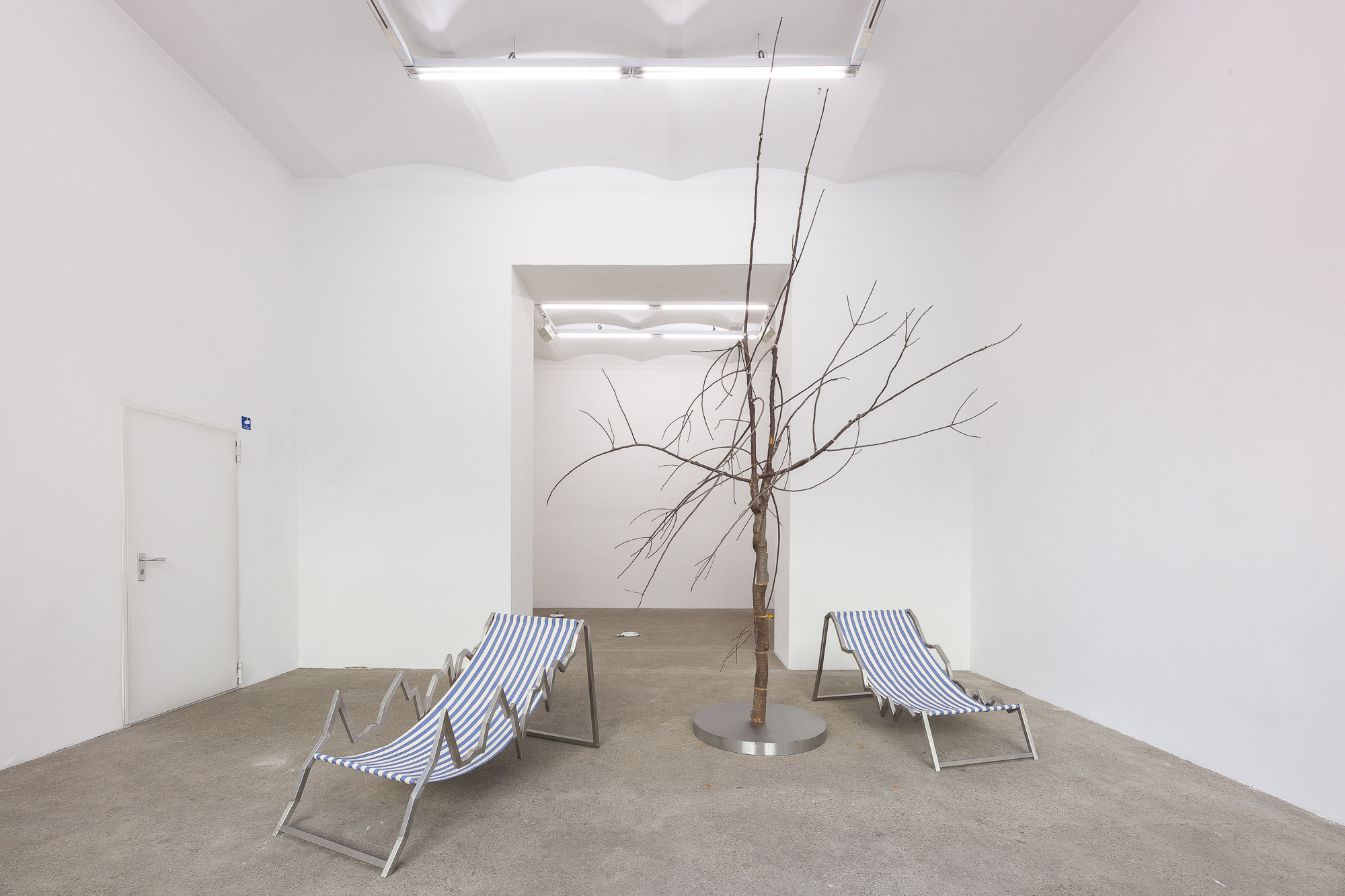
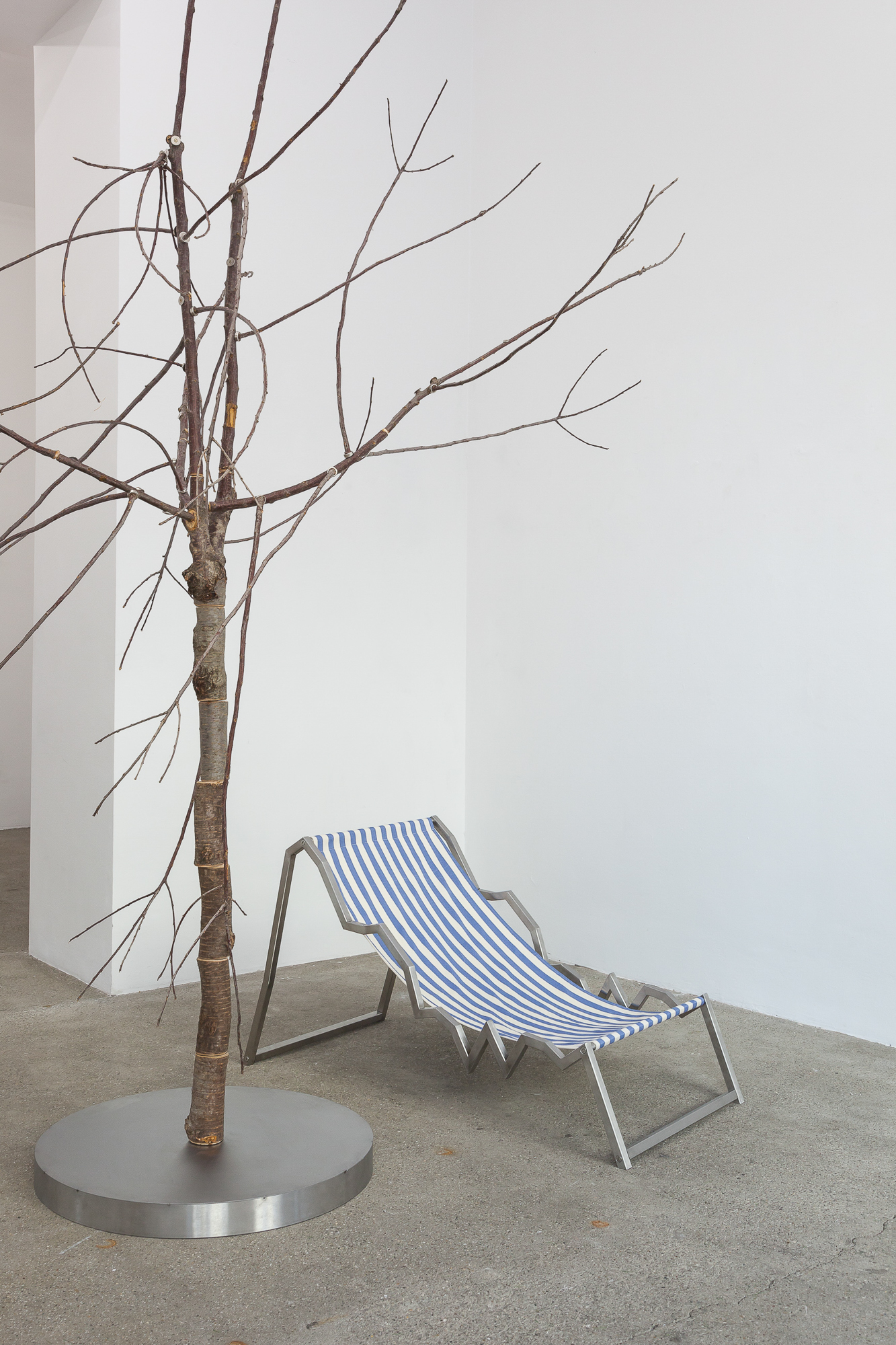
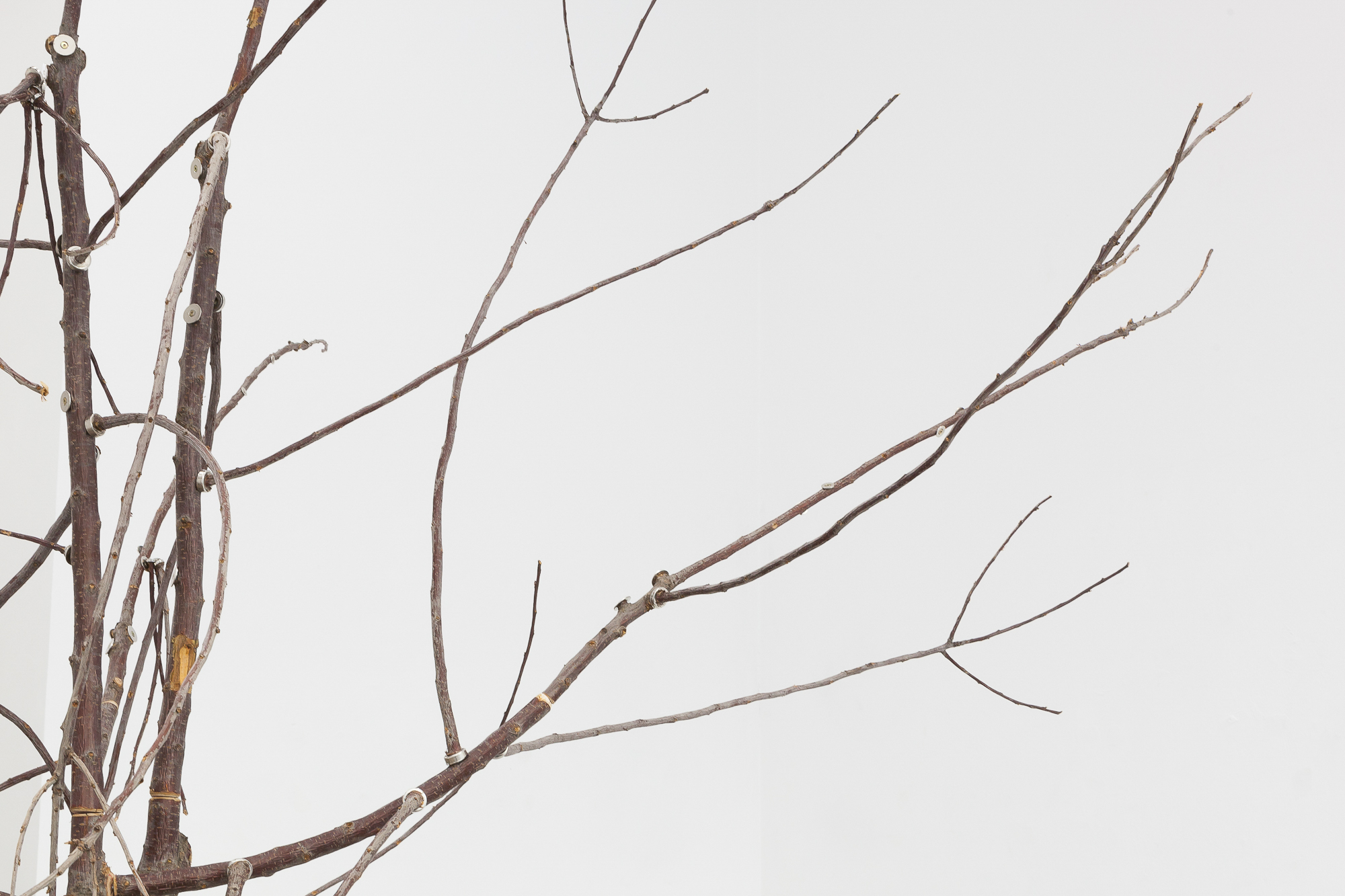
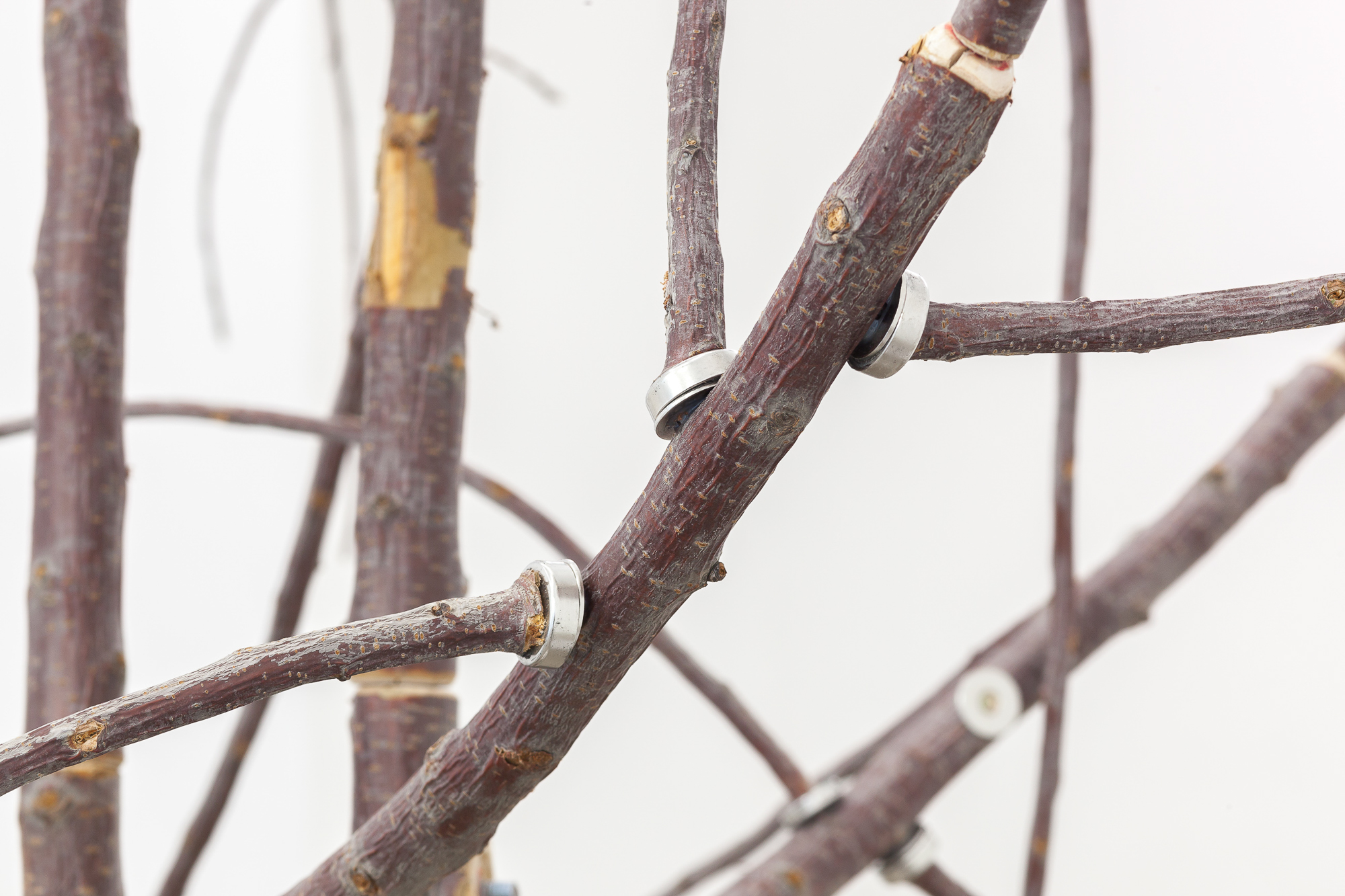


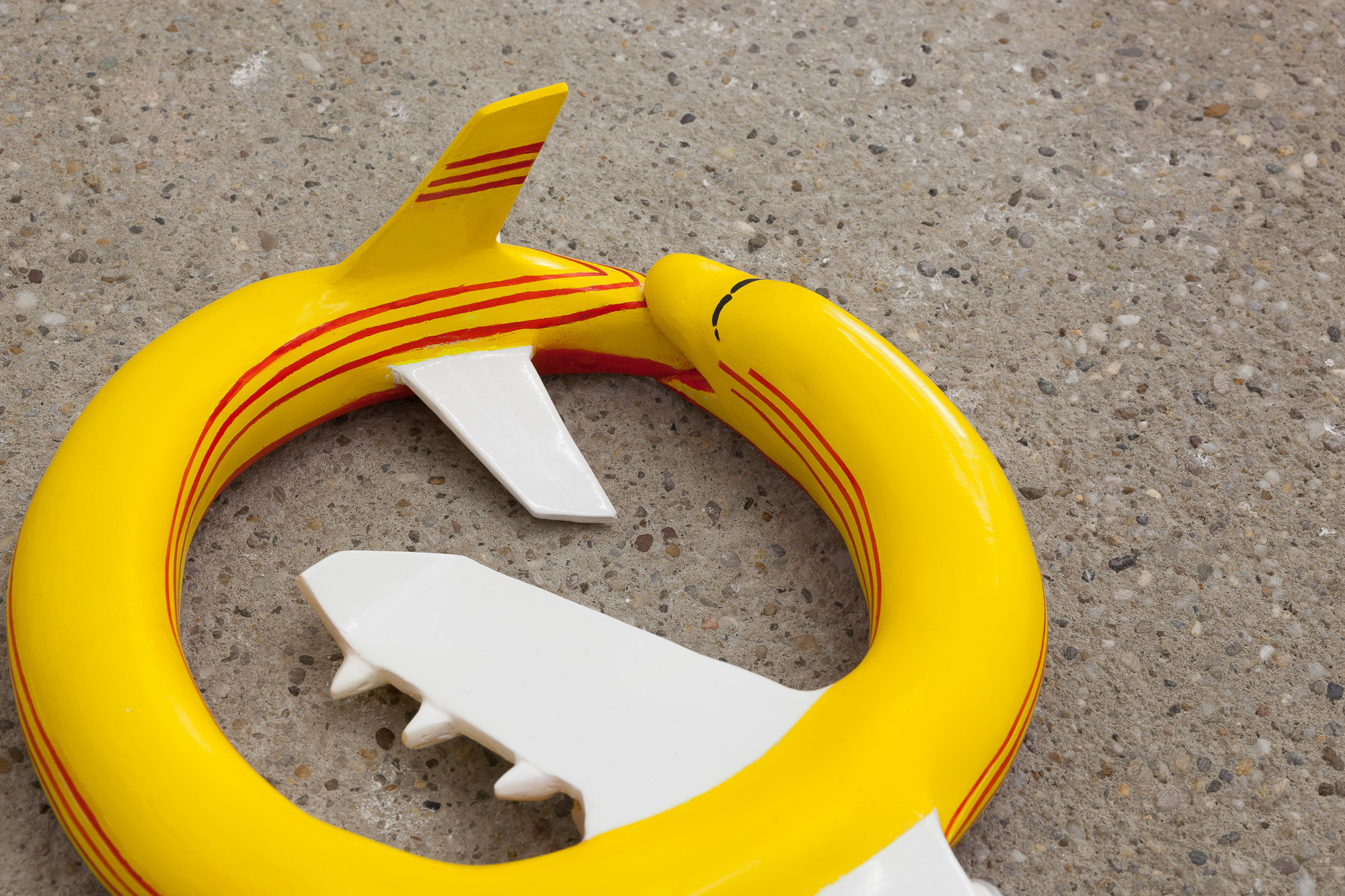
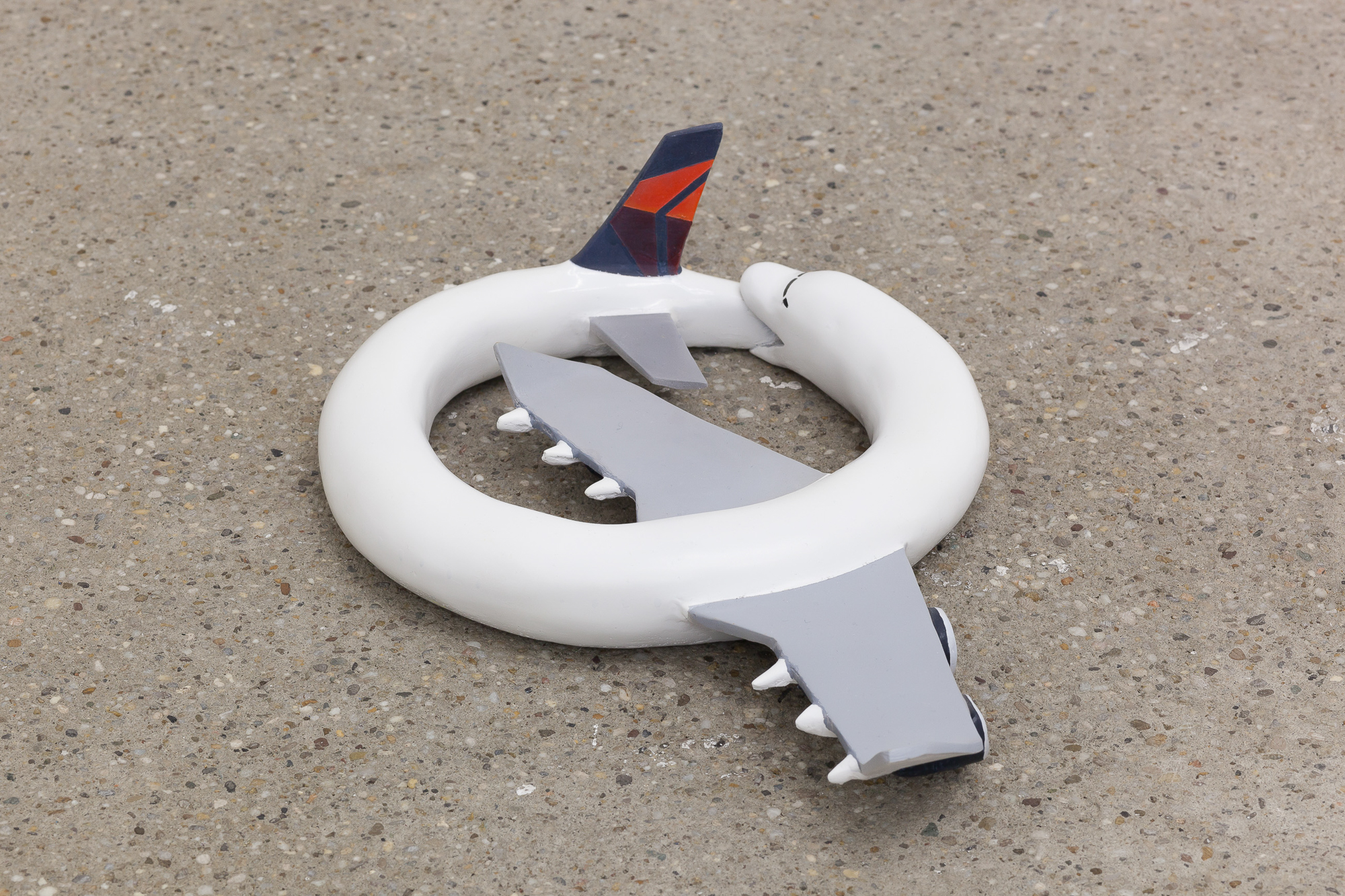




Einzelausstellung bei tart.vienna
20.01.–26.03.2022
Auf den ersten Blick suggeriert der Raum ein pittoreskes Urlaubsbild, das unser kollektives Verlangen nach Wohlbefinden hervorruft. Doch bei näherer Betrachtung manifestiert sich die Sterilität der Landschaft in Stahl, Astwerk und Plastik als dystopische Imitation—was ist an dieser natürlichen Umgebung überhaupt authentisch? Seasonal Depression legt unsere eisernen Vorstellungen der Dichotomien natürlich-künstlich, individuell-kollektiv und echt-unecht offen, löst diese auf und verknüpft sie neu.
Der Diskurs um unser gegenwärtiges Zeitalter, das Anthropozän, thematisiert das unumkehrbare Eingreifen der Menschen in ihre Umwelt, angetrieben durch Kapitalismus und Kolonialismus. Doch die Vorstellung einer unberührten Natur war immer schon falsch—“Die Evolution unseres »Selbst« ist bereits von Zusammenstößen verunreinigt, von den Geschichten unserer Begegnungen; wir sind immer schon mit anderen verquickt, bevor wir eine neue Kollaboration anfangen” schreibt Anna Lowenhaupt Tsing in Der Pilz am Ende der Welt. Der in der Mitte des Raumes platzierte Kirschbaum verliert seine Fähigkeit zur Veränderung, die von nun an der Mensch übernimmt: Durch Magnete und Schraubverschlüsse lässt sich der Baum nach dem Baukastenprinzip kinderleicht auseinandernehmen und nach individuellem Belieben wieder zusammensetzen. Natur wird hier völlig den Vorstellungen des rationalen Homo oeconomicus unterworfen, der sie erobern und beherrschen will und sich gleichzeitig nicht als Teil von ihr erkennen möchte. Der Kirschbaum fußt in einem Podest aus Edelstahl, der ihn aus seiner Umgebung entwurzelt und zu einer ästhetisierten Erinnerung des Trugbilds von wilder Natur werden lässt. In dem Bestreben, ein Stück Natur in einem Moment festzuhalten, wird jegliche Möglichkeit symbiotischer Kollaboration verweigert, was letzten Endes erst recht in der Unterjochung der Umwelt resultiert.
Das Motiv des Eingreifens auf spielerische Art und Weise wird ebenfalls in den bunten Skulpturen, die am Boden verteilt sind, reflektiert. Modellflugzeuge, bemalt in der Corporate Identity großer Flugfirmen, nehmen die zirkuläre Form des Ouroboros an—der Schlange, die sich selbst in den Schwanz beißt. In der holistischen Gestalt des Ouroboros werden Gegensätze vereint, in ihm ist alles enthalten. Die Skulpturen werden so zu Hybriden aus Maschine und Tier in den grellen Tarnfarben der Konsumgesellschaft, die sich die endlose, untrennbare Verbindung von Industrie, Umwelt und Verantwortung einverleiben.
Zwei glänzende, hochwertig gearbeitete Liegestühle aus Edelstahl komplementieren die Szenerie und strahlen jene Art von Reichtum und Individualismus aus, den man sich von ihrem Besitz erhofft. Die Seitenlehnen der Stühle folgen den Konjunkturen und Depressionen der Wirtschaftskrisen 1981 und 2008, zwei Ereignisse, die die Profitgier auf die Spitze getrieben und gesellschaftliche Missverhältnisse weiter verschärft haben. Während die Not der Vielen zu einer Variablen auf dem Graph verkommt, verwandelt sich der Gewinn des Einzelnen in ein begehrenswertes Design-Möbelstück: “Der Kapitalismus bestimmt nahtlos den Horizont des Denkbaren”, analysiert Mark Fisher die scheinbare Alternativlosigkeit des “kapitalistischen Realismus”. An der Stelle der kollektiven Utopie ist nur noch Platz für den luxuriösen Überfluss des Einzelnen, der auf den Schultern der Gemeinschaft dem Luxus frönt. Seasonal Depression kritisiert diese Praktiken extraktivistischer Mechanismen mittels spielerischer Ironie und zeigt die Möglichkeiten künstlerischer Interventionen innerhalb jenes Systems auf.
Sophie Publig
Photo © Galerie Elisabeth & Klaus Thoman /Flavio Palasciano
Solo Show at tart.vienna
20.01.–26.03.2022
At first glance, the space suggests a picturesque holiday image that evokes our collective desire for wellness. But on closer inspection, the sterility of the landscape, manifesting itself in steel, branchwood, and plastic, resembles a rather dystopian imitation thereof—what is authentic about this natural environment anyway? Seasonal Depression unfolds, dismantles, and reconnects our ironclad notions of the binary oppositions natural-artificial, individual-collective, and real-authentic.
The discourse around our current era, the Anthropocene, addresses the irreversible intervention of humans in their environment that has been fuelled by capitalism and colonialism. However, the notion of a pristine nature has always been fallacious: “The evolution of our “selves” is already polluted by histories of encounter; we are mixed up with others before we even begin any new collaboration”, writes Anna Lowenhaupt Tsing in The Mushroom at the End of the World. The cherry tree placed in the centre of the space loses its ability to change, which humans take over from now on. Thanks to magnets and screw caps, it is dead easy to take the tree apart using the building-block concept, just to put it back together again according to individual preferences. Here, nature is completely subjected to the visions of the rational homo oeconomicus who wants to conquer and dominate it, while at the same time does not want to recognise himself as part of it. The cherry tree rests on a pedestal made of stainless steel, which uproots it from its surroundings and turns it into an aestheticised reminder of the illusion of unruly nature. When trying to capture a piece of nature in a certain moment, any possibility of symbiotic collaboration is denied, which ultimately results in the subjugation of the environment.
The motif of playful intervention is also reflected in the colourful sculptures scattered on the ground. Model aeroplanes painted in the corporate identity of major airline companies take on the circular form of the ouroboros; the snake that bites its own tail. In the holistic form of the ouroboros, opposites are united as everything is encased in it. The sculptures thus become hybrids of machine and animal in the bright camouflage of consumerism, endlessly incorporating the inseparable connection between industry, the environment, and responsibility.
Two shiny stainless steel deck chairs of high quality complement the scenery. They radiate the kind of wealth and exclusivity that one hopes to gain from their possession. The chairs' armrests follow the conjunctures and depressions of the economic crises of 1981 and 2008, two events that carried the greed for profit to extremes and further exacerbated social discrepancies. While the misery of the many degenerates into a variable on the graph, the profit of the individual converts into a desirable piece of design furniture. In Capitalist Realism: Is There No Alternative?, Mark Fisher analyses how ”[c]apitalism seamlessly occupies the horizons of the thinkable” culminating in the apparent lack of alternatives to "capitalist realism". In the place of collective utopia, there is now only enough space for the lush excess of the individual, who indulges in luxury on the shoulders of the community. Seasonal Depression critiques extractivist practices through playful irony and highlights the possibilities of artistic intervention within that system.
Sophie Publig.
Photo © Galerie Elisabeth & Klaus Thoman /Flavio Palasciano